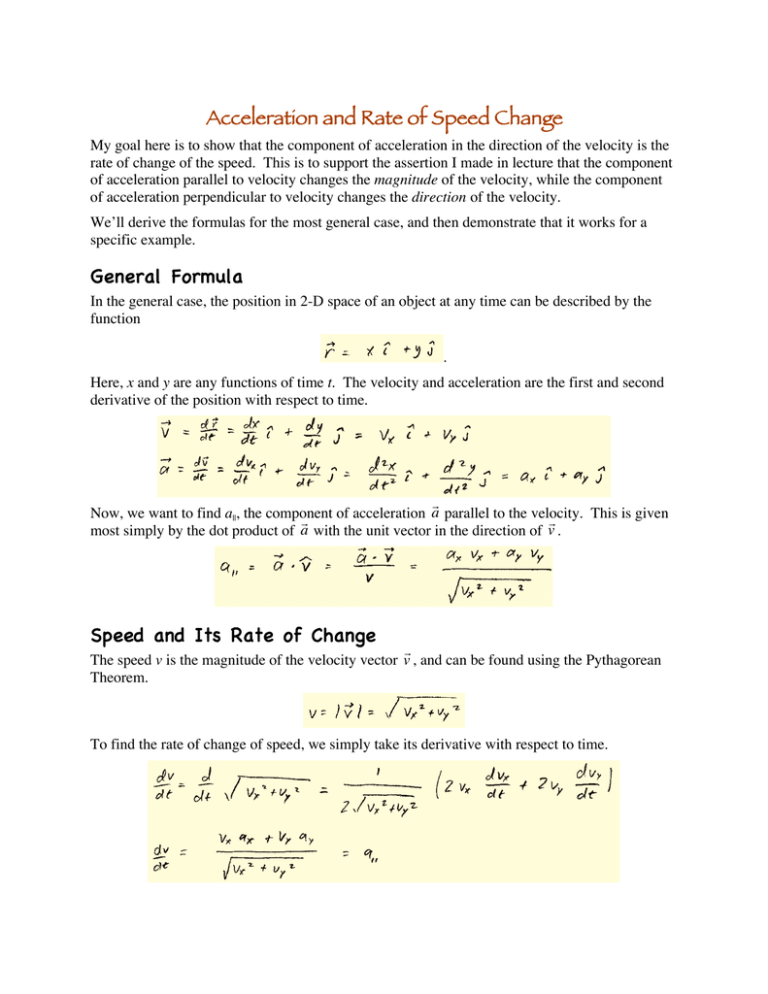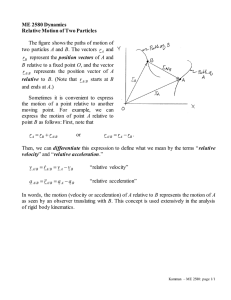Acceleration and Rate of Speed Change General
advertisement

Acceleration and Rate of Speed Change My goal here is to show that the component of acceleration in the direction of the velocity is the rate of change of the speed. This is to support the assertion I made in lecture that the component of acceleration parallel to velocity changes the magnitude of the velocity, while the component of acceleration perpendicular to velocity changes the direction of the velocity. We’ll derive the formulas for the most general case, and then demonstrate that it works for a specific example. General Formula In the general case, the position in 2-D space of an object at any time can be described by the function . Here, x and y are any functions of time t. The velocity and acceleration are the first and second derivative of the position with respect to time. r Now, we want to find a||, the component of acceleration a parallel to the velocity. This is given r r most simply by the dot product of a with the unit vector in the direction of v . Speed and Its Rate of Change r The speed v is the magnitude of the velocity vector v , and can be found using the Pythagorean Theorem. To find the rate of change of speed, we simply take its derivative with respect to time. Note that this is the same formula we obtained for a||, using a completely different approach! Specific Example We’ll analyze all these quantities for the specific example presented in class, Velocity and acceleration formulas follow readily. We can find a|| = dv /dt using the formula derived above. At the specific time of t = 1s, this evaluates to But is this really the component of acceleration r in the direction of the velocity at t =1 s? We can verify that it is by taking the components of a in a different way. We’ll find the angle between r r r r a and v . The component of a parallel to v will be a cos (). r r Vector a is in the ˆj direction, which is the angle –90°. At t = 1s, vector v has components vx=15m/s and vy=5m/s. Its angle is therefore arctan (5/15) = 18.43°, so = 108.43°. Thus a|| = a cos () = (10m/s2) cos (108.43°) = (10m/s) (–0.3162) = –3.162m/s2. It worked! It really is true that a|| is the rate of change of speed.


